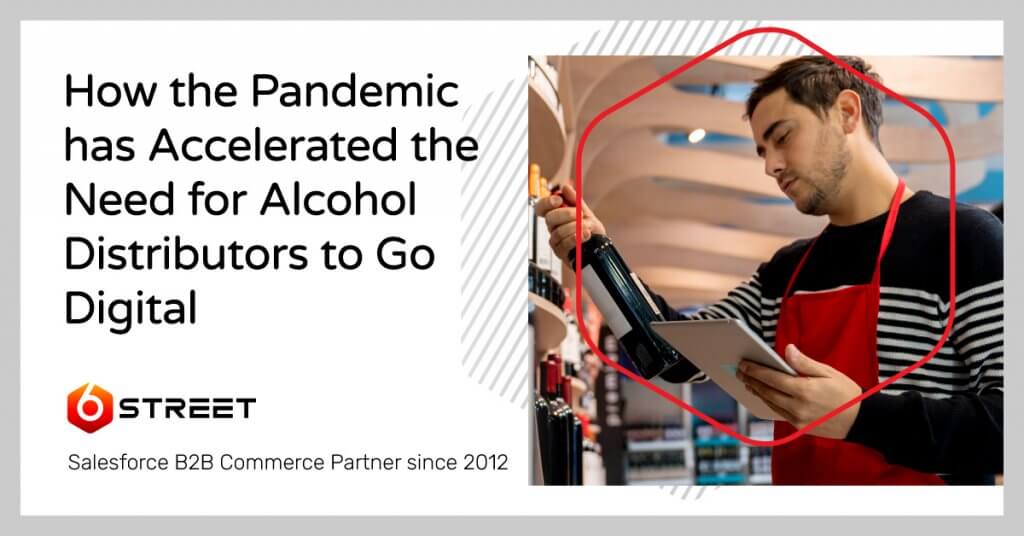Bars and restaurants in many states closed their doors thanks to the Covid-19 pandemic. State restrictions on indoor dining and on-site alcohol service affected restaurants and bars, and the companies that distribute product to these places.
Like restaurants, alcohol distributors had to change their business models to stay afloat. And in a hurry. What happened was alcohol distribution companies embraced a digital transformation that’s likely to change the way they do business forever.
Consumers adjusted their consumption patterns and buying habits, too. It looks as though e-commerce, while healthy before the pandemic, will grow more robust even as a vaccine allows for fewer restrictions.
How does this influence the alcohol distribution business? Read on to find out.
The Old Days
They seem so far in the past, but they were less than a year ago. In the old days, alcohol distributors had a tried and true sales method. The sales representative.
These reps, armed with suitcases full of wine and spirits, hit the pavement and visited restaurants and bars to meet with beverage managers. They allowed these managers and waitstaff to taste products, in hopes of landing a spot on a wine or liquor list.
It was the way business was done. The biggest alcohol distributors and smaller, independent alcohol distributors conducted business in this way. It worked because it was the only way these companies knew how to do business.
And it was fun. One of the perks of restaurant and bar management was when a rep came by loaded with new products to try. Nothing takes the stress of a 12-hour workday away like an early afternoon Bordeaux tasting.
When Covid-19 hit, the old days became a distant memory overnight.
Increasing Consumer Demand
There was a revolution in the alcohol distribution business taking place before the pandemic. The popularity of digital wine and beverage clubs showed great progress as millennials and of age Gen-Z showed a preference for beverage apps.
As grocery delivery showed signs of a boom, these companies, like Instacart, expanded into alcohol delivery where allowed by law. Websites and apps soon followed.
When the pandemic hit, this e-commerce business model exploded into full bloom. If you were like many alcohol loving Americans, you hit your local brick and mortar store before the rumored shutdowns to load up your home bar.
Once that supply ran out, you wondered where you could refresh your supply without wandering out into a crowded store or supermarket. Some states, like Pennsylvania, cut off liquor and wine access to its citizens for almost two months.
To meet demand, alcohol distributors by state responded to looser sales restrictions. They accelerated their e-commerce operations to sell and deliver directly to the consumer.
Many already did this, but estimates say the pandemic accelerated the e-commerce shift five years ahead of previous prediction models.
A Change in Preferences
Since the end of prohibition, any time you searched for “alcohol distributors near me” you were more than likely looking for cases of full bottles. Or you were a wine enthusiast looking to buy rare and expensive bottles to cellar.
Covid-19 changed all that. Cut off from their favorite bars and restaurants, cocktail lovers wondered when they’d get their next old fashioned. Some entrepreneurial restaurants and bars started bottling and canning operations to meet this demand.
While that works for people who live in a city, those who live in the suburbs or rural areas don’t have that kind of access. The demand for deliverable premade cocktails boomed.
As this boom continues, alcohol distributors continue to change their online portfolios to meet this demand. Americans in love with cocktails no longer have to go out to get them.
There’s no substitute for a dining experience with a craft cocktail. Once the US is vaccinated and people come out of their houses, experts predict the restaurant business will flourish.
Though as of now, the liberation of cocktails bought online reverberates through the alcohol distribution business.
The Digital Advantage
The old ways liquid alcohol distributors did business had their advantages. The on-site sales representatives added a personal touch to the restaurant and bar industry ecosystem. Beverage managers and reps formed real relationships.
These relationships helped people find better jobs. They also made for better sales on more esoteric wine and spirits that a sommelier knew their customer base would love, even if the customers didn’t yet know it.
Nothing beats an actual tasting. If these reps could get a beverage manager to fall in love with a product, that love would trickle down to the staff. If the waitstaff loves a product, they will sell more of it to their customers.
While this business model had its advantages, it relied too much on wholesale buyers as a middleman to consumer preferences. As online sales increase, alcohol distributors have access to a whole world of data they never had before.
They can now track consumer preferences and spending in a direct way. When the pandemic is behind us and restaurants and bars reopen, sales reps can now be in the driver’s seat during tastings.
With a sleeve full of consumer statistics, these reps will now be able to tell the buyer what their customers prefer. This consumer data allows the distributors to dictate to buyers rather than the buyers to the distributors.
The Changing Business of Alcohol Distributors
Alcohol distributors faced a major business disturbance in 2020. With restaurants and bars closed thanks to Covid-19, and then a slow reopening full of state-mandated capacity and service restrictions, distributors needed a new model.
Though the e-commerce aspect of wine and spirits distribution showed growth, nobody could’ve predicted the acceleration. The permanent changes in online demand will change the business forever.
Do you need help transitioning your business to meet the demands of the e-commerce revolution? Here at 6 Street, we have all the know-how you’ll need. Contact us today to see how we can help you.
